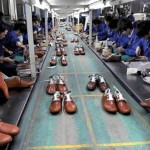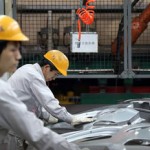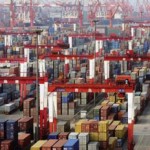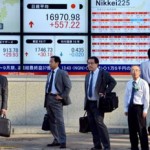China’s PMI records slight improvement
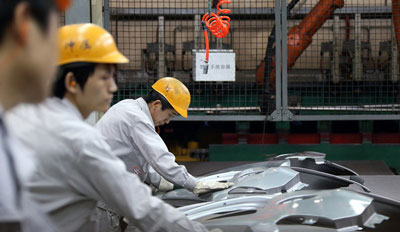
China‘s manufacturing activity improved slightly in May, while the service sector continued to weaken, indicating complications in the world’s second-largest economy, a survey showed yesterday.
The official Purchasing Managers’ Index, a comprehensive gauge of operating conditions in large state-owned industrial companies, landed at 50.2 last month, up from 50.1 in March and April, according to the National Bureau of Statistics and the China Federation of Logistics and Purchasing.
A reading above 50 indicates expansion. The latest reading marked the third consecutive month of growth.
However, the non-manufacturing PMI, a counterpart for the service sector, shed 0.2 points from a month earlier to 53.2 in May.
Zhao Qinghe, an analyst at the bureau, said the mixed performance suggested continued economic uncertainties but there were positive signs for a long-awaited stabilization.
“China’s intensive supportive policies in recent months have shown effects on the manufacturing sector though the improvement remained marginal,” Zhao said. “Downward pressures still existed. Risks include those derived from tight cash flow, insufficient market demand, rising labor costs and weak trade.”
Zhao said the service sector grew at a slower pace last month due to less activity in the transport and catering industries, but it remained stable.
The component indexes showed industrial production rose for the third straight month in May to 52.9, up from April’s 52.6, while new orders rose 0.4 points to 50.6. The input price landed at 49.4, up for the fourth straight month and suggesting fewer deflationary risks.
Meanwhile, performance of China’s private and export-oriented manufacturing companies also rebounded in May but was below the 50-point level.
The HSBC China Manufacturing PMI, a gauge for the private and export-oriented industrial firms, landed at 49.2 in May, better than its flash reading of 49.1 and the final reading of 48.9 for April. It has been below the demarcation line for the third straight month after a brief rebound in February.
Zhou Hao, an economist at Australia & New Zealand Banking Group, said China’s pro-growth policies helped the improvement in the manufacturing PMI.
“The policies appeared to have helped stabilize the growth momentum,” Zhou said. “For instance, coal consumption in the major power plants remained stable in early May, and crude steel output picked up slightly during that period.”
China‘s economic growth slowed to 7 percent in the first three months of this year, the weakest quarterly expansion in six years, prompting the central bank to ease policies over the past few months that included cuts in interest rates and the reserve requirement ratio.
Zhou said China’s economy requires further easing measures, with fiscal policies needed more than monetary policies.
“Monetary easing has had a limited impact on the economy,” Zhou said. “We expect fiscal policies and targeted measures will continue to be rolled out in the remainder of the year.”
As part of fiscal efforts to revive and push forward the manufacturing sector, China recently unveiled its “Made in China 2025” vision.
The plan is to promote high-technology industry by 2025 and move the world’s second-largest economy away from the low-value manufacturing model that fueled the country’s growth over the past 25 years.
Source: China.org – China’s PMI records slight improvement









